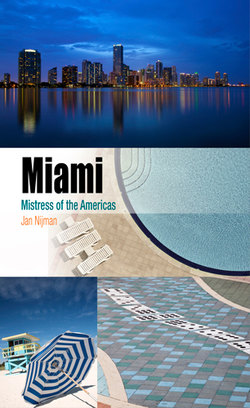Miami

Реклама. ООО «ЛитРес», ИНН: 7719571260.
Оглавление
Jan Nijman. Miami
Отрывок из книги
Metropolitan Portraits explores the contemporary metropolis in its diverse blend of past and present. Each volume describes a North American urban region in terms of historical experience, spatial configuration, culture, and contemporary issues. Books in the series are intended to promote discussion and understanding of metropolitan North America at the start of the twenty-first century.
JUDITH A. MARTIN, SERIES EDITOR
.....
The first synagogue in Miami was built in 1913 and the event marked the assertion of the Jewish community in Dade County. By 1926, there were about thirteen hundred Jews in the city of Miami. In Miami Beach, there were no more than a few hundred, and the first synagogue was not built until 1927, on the corner of 3rd Street and Washington Avenue. It is said that almost every Jew who was a permanent resident of Miami Beach between 1927 and 1932 was a member of and a financial contributor to the synagogue.18 The central and northern parts of Miami Beach continued as the domain of wealthy gentiles, and some hotels even posted signs indicating that Jews were not welcome until such signs were banned in 1949.
The way Miami’s urban society evolved seemed to set a pattern that, with some variation, is still with us today. A strong sense of community was forged among some of the less powerful segments of South Florida’s population, particularly blacks and Jews. These communities had a strong ethnic base, lived in highly segregated neighborhoods, and developed a sense of local identity.19 The business elite, in contrast, seemed to have a more loose association with Miami. They viewed it as a business opportunity, rather than a place to live, and they usually held on to homes elsewhere. Their prosperity fostered individualism; their mobility withheld local community membership.
.....